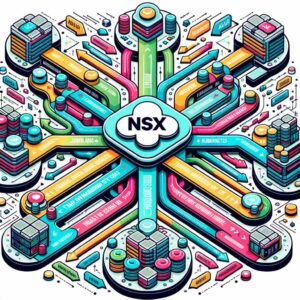Why I chose Tanzu Kubernetes
Before we explore the intricacies of Tanzu Kubernetes, I recommend reading my previous article to gain a foundational understanding. Having previously deployed vanilla Kubernetes and faced the challenge of setting up a Kubernetes cluster for multiple teams, I was on the lookout for a more robust solution. Tanzu Kubernetes emerged as my choice, and here’s a detailed overview of why:
Integrated Environment
Tanzu Kubernetes is not just about Kubernetes; it offers an integrated environment that combines developers’ tools and IT operations into a single platform. This simplifies the entire process of deploying, monitoring, and scaling applications.
Storage Management on Tanzu

One of the standout features of Tanzu Kubernetes is its comprehensive storage management. It boasts an in-built CSI driver tailored for vSphere. This driver permits the direct use of vSphere storage, streamlining the process of provisioning persistent volumes for Kubernetes applications. In essence, vmdk can be employed as a persistent volume, negating the need for additional storage systems like Ceph. While I’ve found Ceph to be stable, it requires a dedicated expert for management. Additionally, Tanzu is versatile, supporting other CSI-compliant storage providers such as AWS EBS, Azure Disk, and Google Cloud Persistent Disk.
Enhanced Security
Security is paramount in today’s digital landscape, and Tanzu Kubernetes doesn’t disappoint. It offers built-in security features, ensuring that both the infrastructure and applications are protected from potential threats. Regular patches and updates further reinforce this security.
NSX ALB (formerly AVI)

Deployment flexibility is another highlight of Tanzu Kubernetes. Users can choose between kube-vip or NSX ALB (AVI) for deployment. My preference leaned towards AVI because of its operation outside the Kubernetes framework. Traditional solutions like metalLB or VIP route traffic through the Kubernetes circuit first before distribution. AVI, on the other hand, starts the redistribution and balancing process externally, optimizing the handling of substantial traffic loads. Notably, the serviceEngine – AVI’s workhorse – can be customized both vertically and horizontally.
Seamless Integration with Cloud Services
Tanzu Kubernetes is designed to be cloud-neutral. Whether you’re operating on private, public, or hybrid clouds, Tanzu offers seamless integration, ensuring that your applications are both portable and scalable across different environments.
Consequently, I’ve deployed multiple workload clusters for various teams. It appears everyone is pleased with having their own dedicated and isolated cluster to work with.
Next time, I will go further with ClusterClass.
Thanks,
AJ